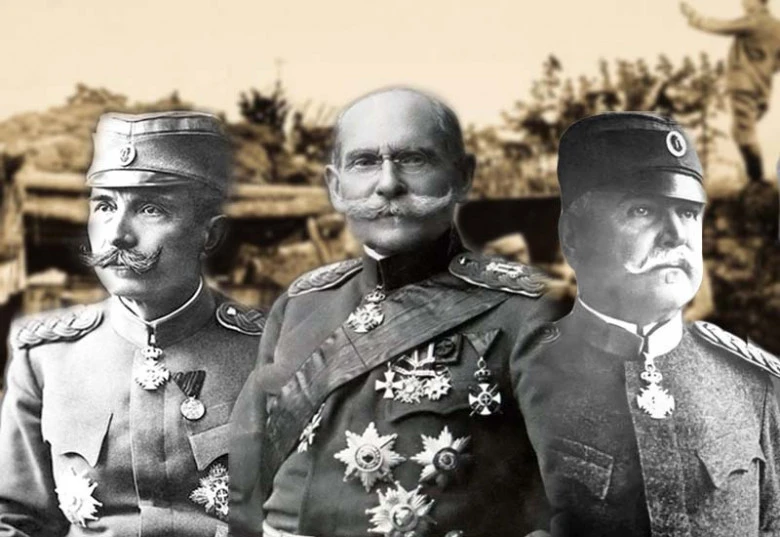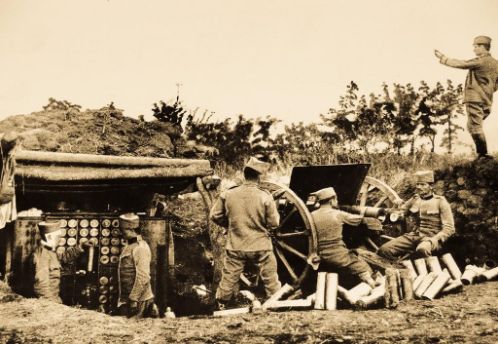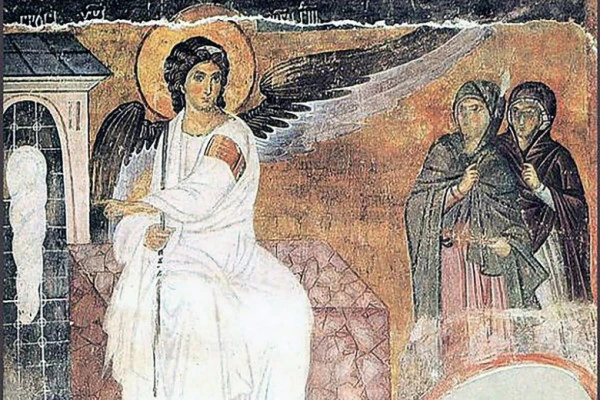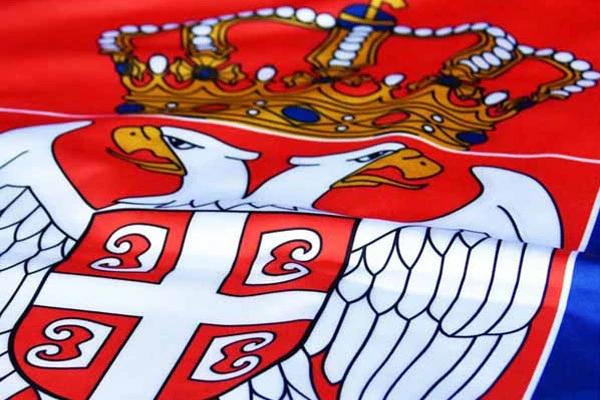- Home
- Blog
- Get to know Serbia
- BATTLE OF CER
BATTLE OF CER

Inscribed in the history of war as a great victory of the people, the army and one small country over a great power, the Battle of Cer was a turning point and a wind in the back of the Serbian army.
One of the greatest Serbian victories on Cer is still the subject of disagreement among historians. Namely, some cite as the beginning of the battle the day when the Austro-Hungarian troops broke through the Drina, while others cite the day when the Serbian troops counterattacked.
Poor assessment of the size of the Serbian peasant
The historical writings praise the commander-in-chief, Pojorek, that he will trample Serbia in just seven days, and that all this is just a "walk to Nis" where they were supposed to meet with the Bulgarian army.
Such self-confident people called the army formed for the campaign in Serbia a "punitive expedition".
Such statements were not surprising considering that the Serbian army entered the war with 250,000 soldiers, while the Austro-Hungarian army numbered about 1.5 million soldiers, and formed 300,000 soldiers for the battle of Cer.
With this army, Pocorek planned an attack on Serbia across the Drina, playing the surprise card.
Counting on the exhaustion of the Serbian peasant in the Balkan wars, they believed that Serbia would "fall to its knees" in a short time. However, history takes a different course.
The Battle of Cer is the first Serbian but also Allied victory in the First World War. This was a great victory that morally raised the soldiers, but also showed the allies that its enemies are not invincible.
The first Serbian victory in the Great War
The Serbian military ambulance entered the war in a very bad condition. In addition to the lack of medicines and medical supplies, the biggest problem was the insufficient number of doctors.
Serbia, which at the time had a population of about five million, had only about 400 doctors who did their best to help the wounded Serbian soldiers at the front.
They performed operations, sutures and other surgical interventions on the front line, and often died in their own business.
The attack began on August 12, 1914, on the Drina River.

Austro-Hungary, with about 80,000 soldiers of the Fifth Army of General Liborius von Frank, marched across the Drina. At the same time, the Second Army attacked and conquered Sabac via Srem. However, Chetnik troops on the Drina caused problems for General Pocorek.
Austro-Hungarian reports say that already during the first and second attacks, their troops suffered terrible losses from the soldiers hidden behind the bushes and trees that shot at them.
The moment of the reversal of the Battle of Cer
Knowing that Austria-Hungary was preparing a major offensive against Serbia, the Serbian Supreme Command was preparing for tactical-operational actions and a counter-offensive. Estimating that the majority of Austro-Hungarian forces would strike from the north and the Morava valley, while auxiliary forces would attack from the west of the Drina, the Command deployed its forces.
The First Army, under the command of General Petar Bojović, was located in the area of Grocka, Smederevska Palanka, Rača and Topola.
The second army, under the command of General Stepo Stepanović, was located in the region of Obrenovac and Arandjelovac.
The Third Army, under the command of General Pavle Jurisic, protected the northern and northwestern borders from the mouth of the Kolubara to Ljubovija, while the Uzice Army, under the command of General Milos Bozanovic, was in the Uzice region to control routes from Visegrad and Bajina Basta to the Western Moravia Valley.
Noticing the strategic importance of Mount Cer, and according to the current distribution of forces, the commander of the Second Army, Stepa Stepanović, made a plan of action of the Second Army to maneuver in the direction of Cer and Macva and to head west instead of north and meet the attackers.
In anticipation of a strike attack, the Supreme Command made a decision on August 15 that would mark the war in Serbia in 1914.
On the night between August 15 and 16, the first part of the Combined Division met with the predecessor of the Twenty-first Landwehr Division of the Austro-Hungarian Army on the tops of Mount Cer.
Under the blow of the Serbian army, the numerous Austro-Hungarian army began to withdraw. The retreat of the defeated Austro-Hungarian forces across the Drina began on the night of August 19-20 and continued all day tomorrow.
After the triumph on Mount Cer, the Serbs wanted to regain the fortified town of Sabac. Fierce clashes took place on August 21st and 22nd, during which Serb forces managed to break through to the west side of the city.
By August 23, they surrounded the city and adjusted the heavy artillery in the evening. The next day, the Serbs entered the city to find out that the Austro-Hungarians had left it the night before. By the afternoon, Serbian forces had reached the banks of the Sava, ending the first Austro-Hungarian offensive.
Thanks to the great strategy of the Serbian command and the incomparable courage of the Serbian soldiers, not a single Austro-Hungarian soldier remained in Serbia until August 24.
A magnificent victory
The Battle of Cer is a magnificent victory of the Serbian army, which caused a great surprise throughout Europe. Everyone was talking about a small Kingdom that had defeated a superior empire. The economic development and strength of the army between the two countries were in an unequal relationship, and that is what still causes disbelief today.
In one of the most significant battles in Serbian history, members of the Combined, Moravian, Sumadija and Cavalry Divisions stood out with their heroic deeds.
The Serbian soldier showed that although small, his heart is bigger than the Hazburg monarchy. He fought to protect his property and his family. Not even a great and powerful enemy could resist that urge.
The Battle of Cer was of great moral significance for Serbia and the Allies
The Battle of Cer had a huge psychological significance. It came at a time when German troops were advancing irresistibly towards the heart of France.
With the victory on Cer, the small Serbian army contributed to the reputation of the Kingdom of Serbia and placed it on a very high place in relations with the allies.
In the Battle of Cer, Serbian forces lost more than 16,000 soldiers, while Austro-Hungarian losses amounted to about 25,000 soldiers.
Thanks to good command, the Serbian army managed to adapt to the situation on the ground and to win in one sudden, unexpected battle. After this battle, the Commander of the Second Army, General Stepa Stepanović, was awarded the rank of Duke for the results achieved.
INTERESTING FACTS: The Battle of Cer is the first in Serbian history in which the chain of command was broken: Duke Radomir Putnik waited for the outcome of Austro-Hungarian operations, and General Stepa Stepanovic realized the importance of Mount Cer deaf to the command of Duke Radomir Putnik, army in the Battle of Cer.
Related products
Read also
How to wash a pirot carpet - 5 steps to a perfectly clean and fragrant carpet
Traditional Serbian carpets are a valuable family heirloom. They refine and…
White angel - the purest symbol of the Serbian people
Frescoes represent an artistic segment of religion and as such occupy a special…
Serbian flags throughout history - What all Serbian flags looked like and what distinguishes them
A flag is much more than a piece of cloth – it is a symbol of a nation's identity,…
Who was Saint Sava and what was his contribution?
"Saint Sava: A Beloved Serbian Saint with a Rich Legacy and Cultural Significance"
…Serbian New Year: Tradition, Customs and How to Celebrate it
The Serbian New Year, also known as the Orthodox New Year, is celebrated on…
Gifts Inspired by Serbian Culture: Authentic Ideas for the Holidays
The holidays are a time of giving, and finding the perfect gift is often a challenge.…
Traditional Serbian Christmas Customs: How to Cultivate Them in Modern Times?
Christmas is the most joyous holiday in Orthodox Christianity, a time when families…
How to Bring the Spirit of Orthodox Tradition into Your Home This Winter?
Winter is the perfect time to bring warmth, togetherness and the spirit of Orthodox…
Serbian Souvenirs: Perfect New Year's Gifts for All Tastes
New Year is the time of giving, and what is more beautiful than a gift that…
How to stay productive and not waste an entire day on Black Friday shopping
Black Friday is a day full of amazing discounts, but it can easily become exhausting…
Folk Beliefs and Customs for Saint Aranđel - Assembly of Holy Angels
Saint Michael the Archangel, who is celebrated…
Folk Beliefs and Customs for Đurđić - Glory of St. George
Đurđić, the feast of St. George, celebrated on November 16, is one of the most…

Apply for newsletter
Sign up for the Serbianshop newsletter and get a 10% discount.















